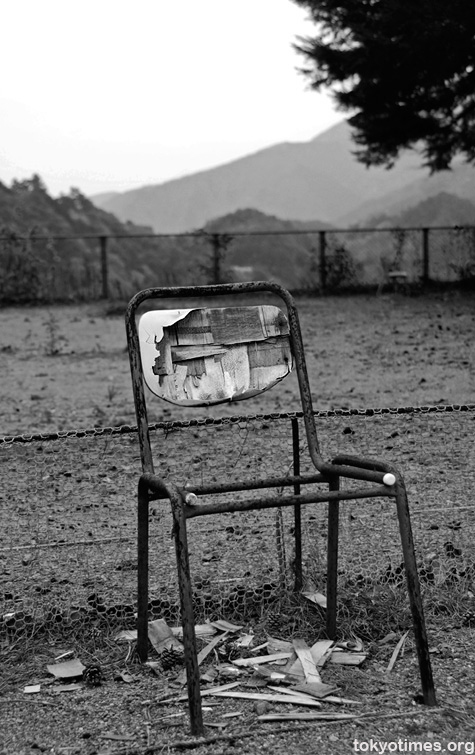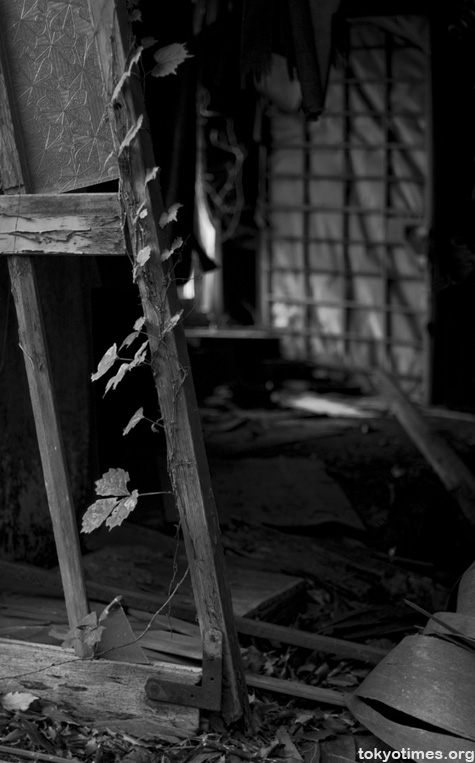The Japanese notion of wabi-sabi is notoriously difficult to describe, let alone try and define; however, whilst many would disagree — including the missus who maybe ought to know more and maintains I’m miles off — this scene, with its sense of transience, silence and certainly sadness, personally at least almost perfectly encapsulates the concept.

As does this, yet somehow not quite as clearly.

Or indeed, completely.
Maz says
I really love that second photograph! It is gorgeous.
Lee says
Thanks Maz!
Wilson says
I’m no expert either, but I have to agree with your wife. Miles off is a little harsh, but I don’t think you are near either.
As much as I like the first photograph in particular, its beauty is too stark. It’s almost post-apocalyptic. Subtlety is key.
Lee says
That’s a fair point Wilson, I guess the picture is a little bleak, and yet to me it’s (almost) perfect…
We may have to beg to differ on this one!
Jobbörse says
that´s a great picture!
Ric Brooks says
I like the photos but I have to agree with your wife. The chair is just sabimashita.
Tornadoes28 says
Way off. Wabi-sabi can be a weathered and worn, beauty that comes with age, etc. What you have pictured is beyond that. Your photos show objects that are beyond just an object that is well used or weathered so I would say they are not wabi-sabi.
But that is just my opinion.
Lee says
Hmm, it looks like a wabi-sabi re-think is in order. Either that or I’ll have to try and set about redefining what it means…
Tornadoes28 says
I like these kinds of posts. Great learning experience.
James says
I have always felt that wabi-sabi was the acceptance of deterioration, even as an end. Anytime I feel overwhelmed by something via it’s beauty or ugliness I feel everything is in place and is as perfect as it is or/and was. I think the term is really up to the individual….much like saying something is “delicious”.
Natchan says
In my professional opinion, the first photograph is wonderful, I love it, perfect composition, The second is just a tad too gray for me, but that’s what photoshop is for! However, I’m afraid I do not feel wabi-sabi in either, I’m sorry. Rustic and derelict yes, but not quite spiritual enough for me.
I have found the search for wabi-sabi to be long and wonderful, and especially satisfying when you come across it, even in the smallest of things. You really know when you find it. Keep hunting! Keep posting photos as well, they are lovely!
Jacqueline says
Not quite wabi-sabi. With the seat intact and the beginnings of wear or flaking on the back–revealing a beautiful pattern–maybe then. To me wabi-sabi is more of a teetering on the edge, just before decay, expressing the melancholy of beauty or perfection or revealing a flaw in something we see as perfect. But thank you for engaging us in this discussion with your wonderful picture.
bharat says
Great pics but, a little bleak to be wabi sabi. It sort of over looks the functional element of wabi sabi and spot lights the impermanence aspect far too much. Somewhere the balance has been tipped far too much to one side.
Still though, they do have a wonderfully evocative quality which is an essential element of what wabi sabi is.
Thomas says
Lovely pics. White and black is wonderful.
Sarah says
I feel the wabi sabi of anything is not in the pictures or object, but one’s feeling in response to it. What is wabi and/or sabi to one person may not provoke the same response to another. Neither of these photographs actually provokes it in me, but I think that the first could, if the broken chair were not so dominant in the picture, but perhaps further in the distance, and not in the centre of the image, and if perhaps the landscape were more panoramic (provided the rest of the landscape felt that sort of serene, lonely melancholia we all clearly appreciate). However, that said, they are very striking images.